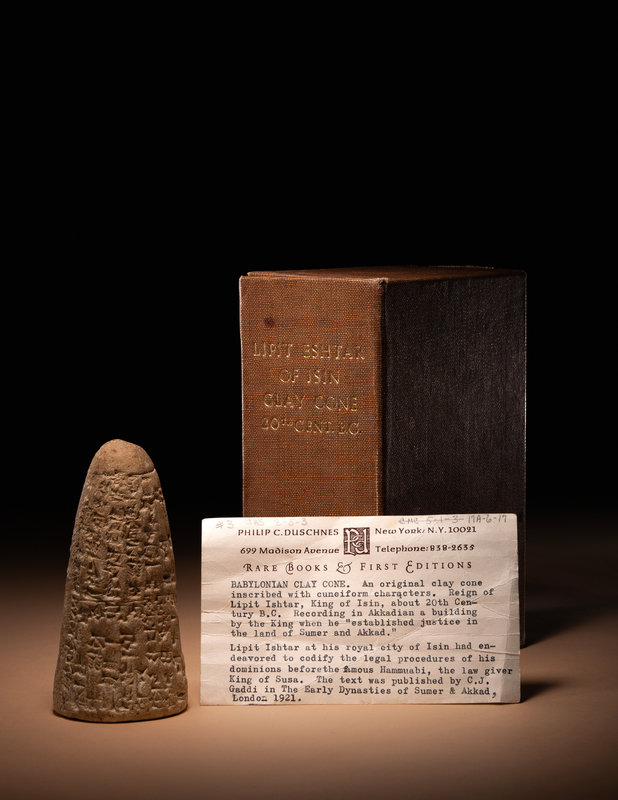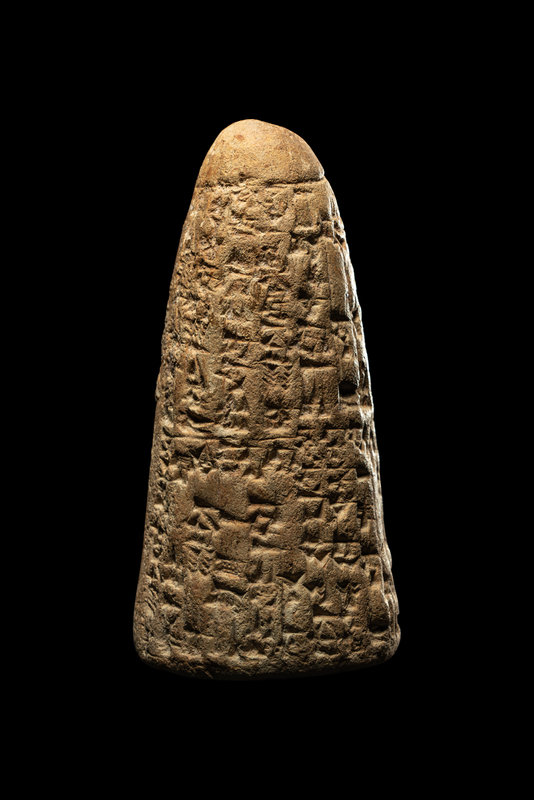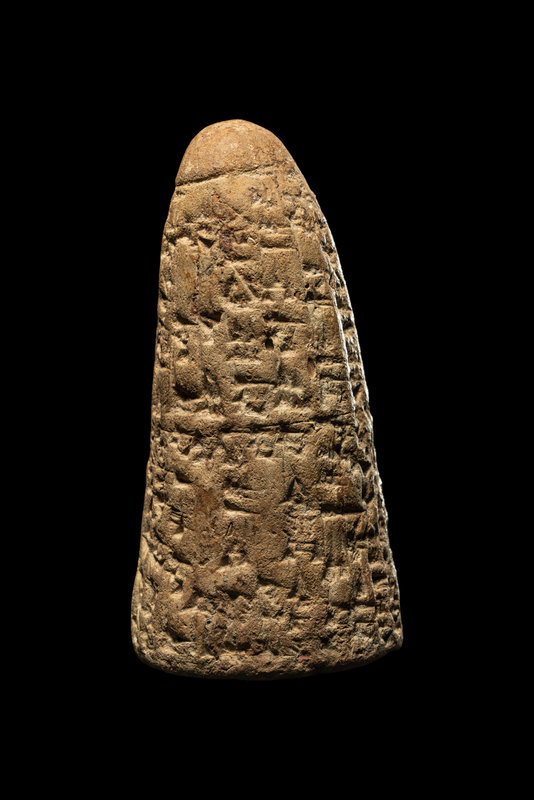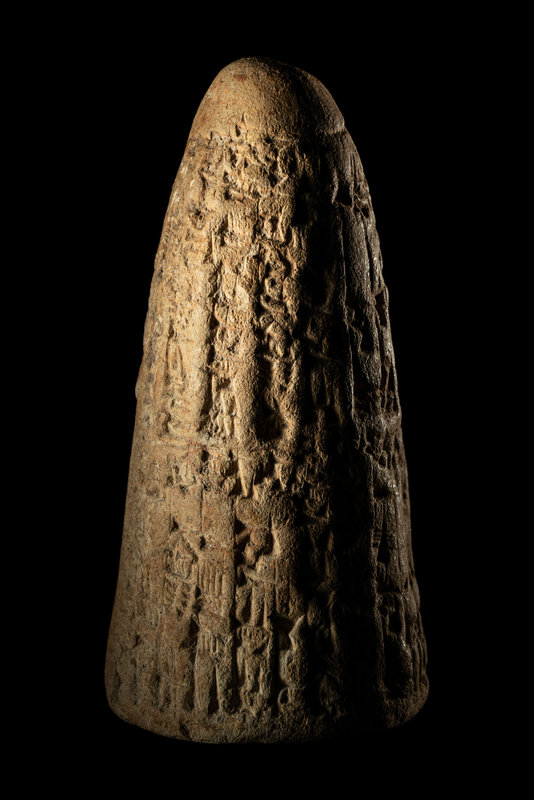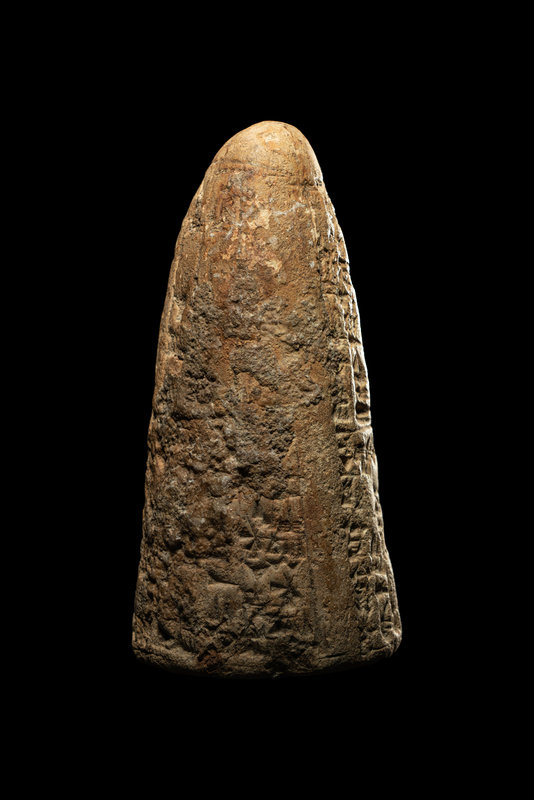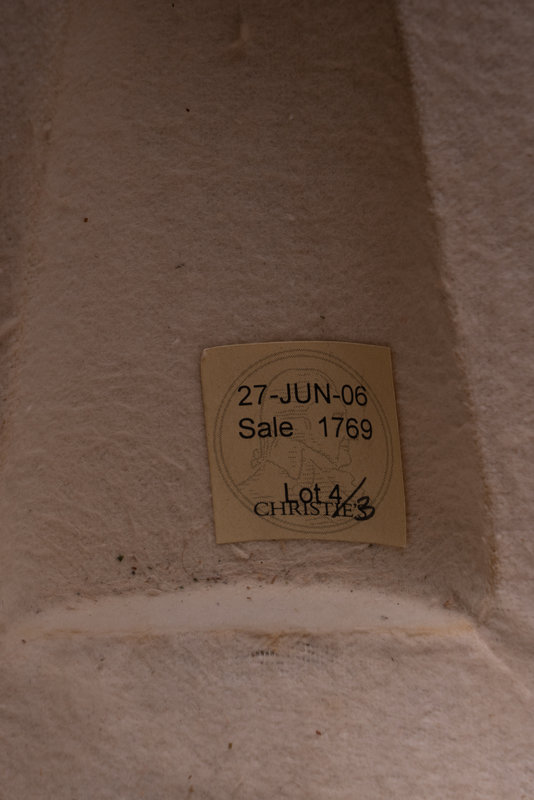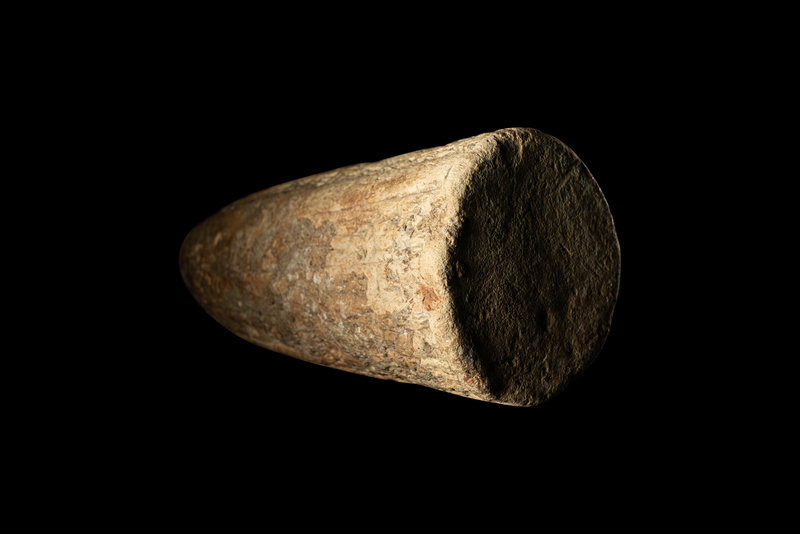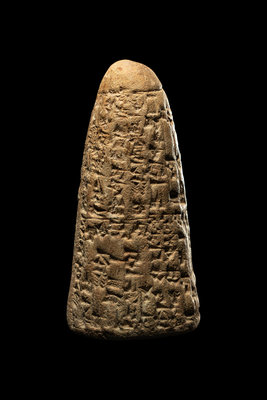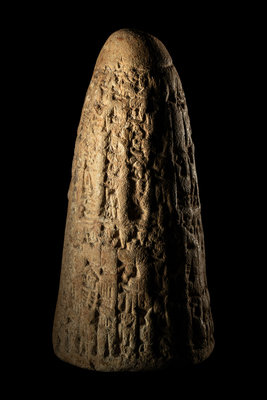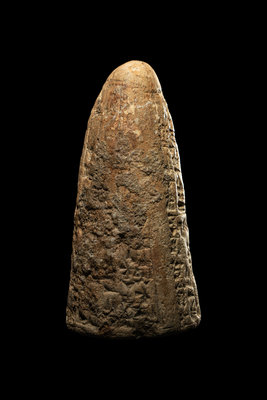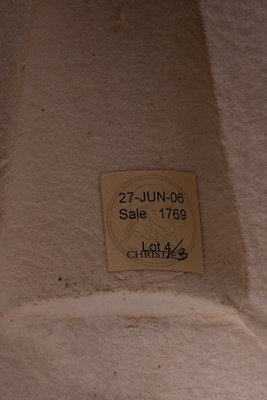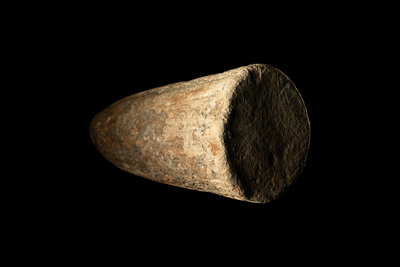Lot 61
An Akkadian Cuneiform Foundation Cone
Sale 1035 - Antiquities and Ancient Art: A Study
May 26, 2022
10:00AM CT
Live / Chicago
Own a similar item?
Estimate
$4,000 -
6,000
Price Realized
$11,875
Sold prices are inclusive of Buyer’s Premium
Lot Description
An Akkadian Cuneiform Foundation Cone
Mesopotamia, King of Isin, Circa 1934-1924 B.C.
Height 4 1/2 inches (11.43 cm).
Provenance:
Philip C. Duschnes, Rare Books and First Editions, New York.
The Cornelius J. Hauck Collection, prior to 1976.
Christie’s, New York, The History of the Book: The Cornelius J. Hauck (1893-1967) Collection, Sale 1769, 27-28 June 2006, Lot 4.
Translation:
“I, Lipit-Ishtar, the humble shepherd of Nippur, true farmer of Ur, unceasing (provider) for Eridu, lord suitable for Uruk, king of Isin, king of the land of Sumer and Akkad, favourite of the goddess Ishtar, fashioned a pair of pot stands, a gift (for) the arms of the gods Enlil and Ninlil, in Isin, the city of my kingship, at the palace gate, when I, Lipit-Ishtar, son of the god Enlil, had established justice in the land of Sumer and Akkad.”
Note:
This foundation cone is a written record for a building commission by the King of Isin, Lipit Ishtar, and the section from the translation above about establishing “justice in the lands of Sumer and Akkad” may refer to his eponymous code of laws.
Before the Babylonian King Hammurabi and his famed law of retribution: “An eye for an eye, a tooth for a tooth”, there was the Code of Lipit Ishtar. Translated from four clay fragments, the Sumerian text written on them forms the basis of his unified code of laws. These partial fragments were recovered during the Nippur excavations by the University of Pennsylvania and predate the Code of Hammurabi by nearly one hundred years. Although the fragments were rediscovered before the diorite stele from which Hammurabi’s code is written on, they had been overlooked until recently. Today, modern scholars are moved to the conclusion that Hammurabi should no longer be celebrated for establishing the world’s oldest known law code, but that this honor should go to his predecessor the King of Isin, Lipit Ishtar.
Condition Report
Contact Information
Auction Specialist
